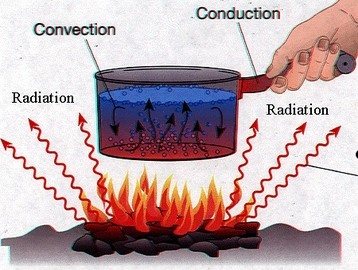Thermal Energy
Work in progress by KwangJun Jung
Thermal energy is energy possessed by an object or system due to the movement of particles within the object or the system.
The Main Idea
All objects are made up of numerous particles or molecules. Within these objects, those particles or molecules are constantly moving or vibrating, generating heat. Thermal energy refers to the internal energy that comes from these moving particles or molecules within the objects. What we mean by a change of "thermal" energy is that part of the internal energy that is associated with a temperature change. In many situations it isn't possible to say how much of the internal energy is thermal, but if the heat capacity is known, we can use a thermometer to measure a change in the thermal energy.
A Mathematical Model
[math]\displaystyle{ {Q = m*C*dT} }[/math] where Q is the thermal energy in Joules (J), m is the mass of an object in grams (g), C is the object's specific heat capacity.For example [math]\displaystyle{ {\frac{d\vec{p}}{dt}}_{system} = \vec{F}_{net} }[/math] where p is the momentum of the system and F is the net force from the surroundings.
A Computational Model
How do we visualize or predict using this topic. Consider embedding some vpython code here Teach hands-on with GlowScript
Examples
Be sure to show all steps in your solution and include diagrams whenever possible
Simple
Middling
Difficult
Connectedness
- How is this topic connected to something that you are interested in?
- How is it connected to your major?
- Is there an interesting industrial application?
History
Put this idea in historical context. Give the reader the Who, What, When, Where, and Why.
See also
Are there related topics or categories in this wiki resource for the curious reader to explore? How does this topic fit into that context?
Further reading
Books, Articles or other print media on this topic
External links
Internet resources on this topic
References
This section contains the the references you used while writing this page
